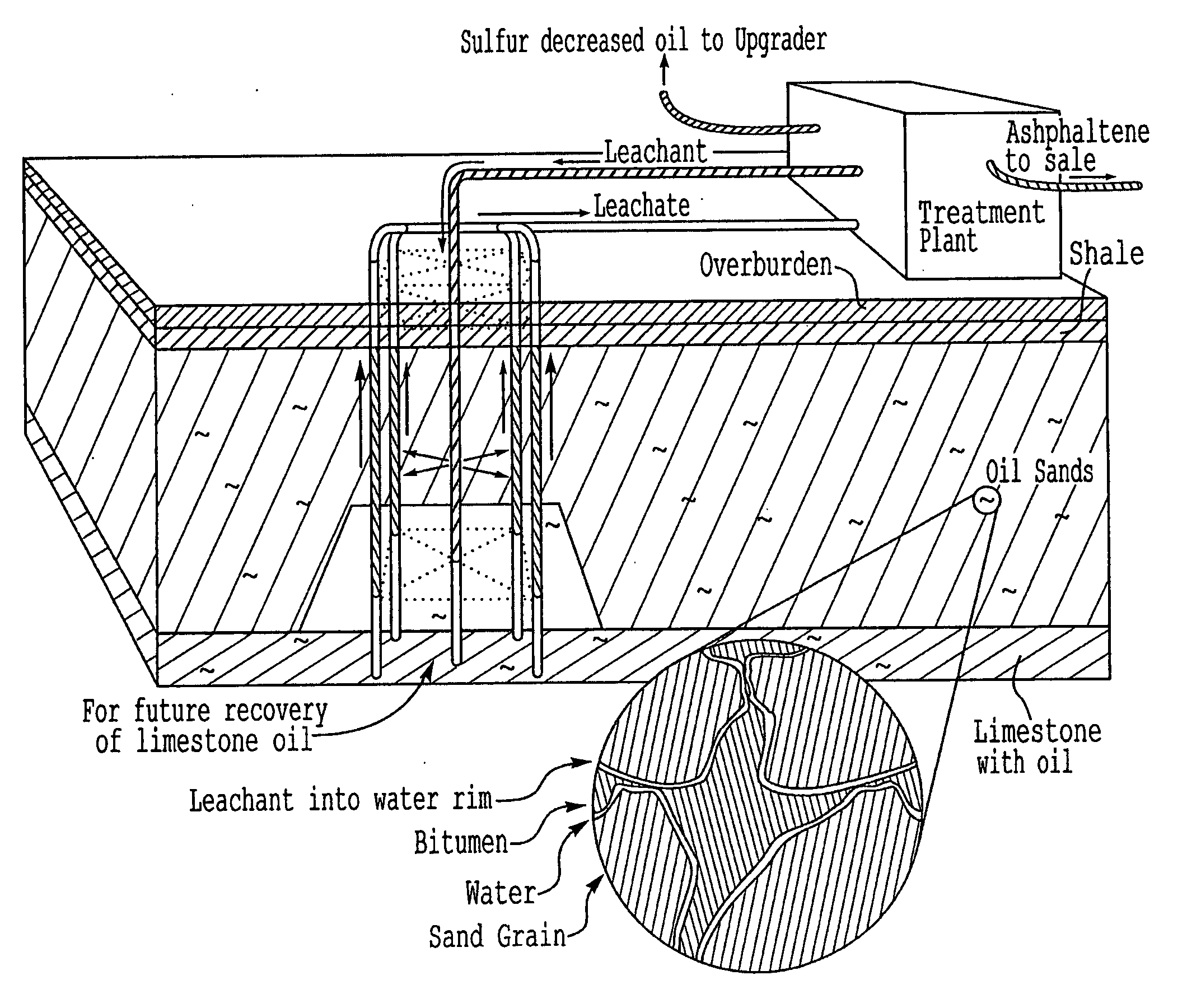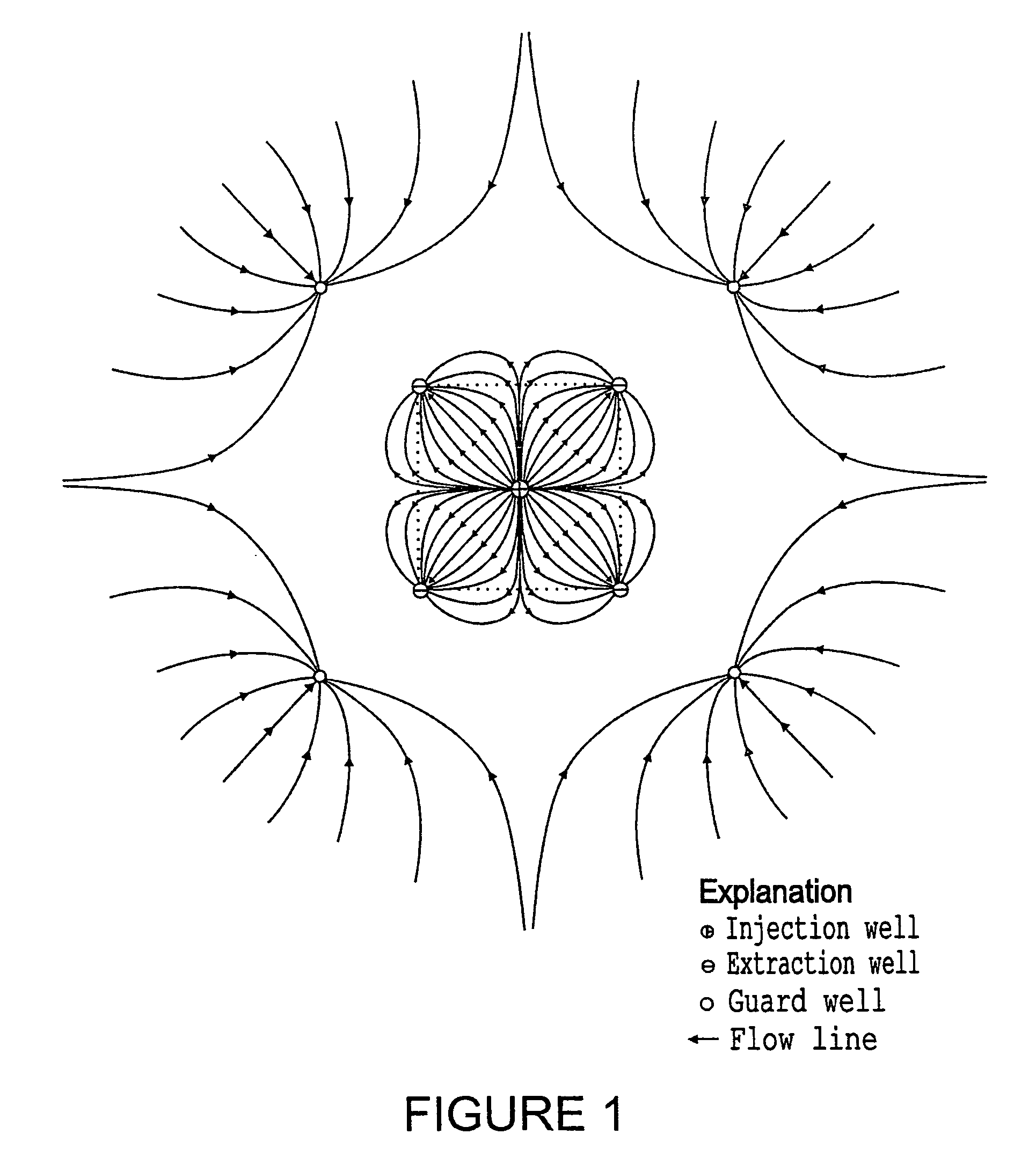Leach recovery of oil from oil sands and like host materials
a technology of oil sands and oil sands, which is applied in the field of oil recovery process, can solve the problems of not being able to meet the requirements of non-renewable petroleum-based solvents
- Summary
- Abstract
- Description
- Claims
- Application Information
AI Technical Summary
Benefits of technology
Problems solved by technology
Method used
Image
Examples
example 1
[0083]Bitumens and particularly the asphaltenes therein are the components of the oil in oil sands and the like, which are most difficult to dissolve and maintain in solution. Naphtha and toluene are known to be very good solvents for bitumens including asphaltenes but subsequently precipitate the asphaltene. In comparison tests, limonene was found to be a good solvent for bitumens and shale oils (approaching toluene in effectiveness) and able to prevent asphaltenes from precipitating. Naphtha was found to precipitate asphaltenes from heavy oil during pipeline transportation thereby causing blockage preventing its transportation.
[0084]Monoterpenes such as limonene and dipentene are much less toxic than mineral spirits (and toluene), are non-caustic, non-reactive to metal surfaces, non-carcinogenic or mutagenic and are readily biodegradable. Due to their flash points these selected monoterpenes should be handled with appropriate care. They are currently regulated as volatile organic ...
example 2
D-Limonene Dissolution of Bitumen
[0087]Laboratory tests disclosed that the ratio of d-limonene to bitumen for the leachate to provide highest flow rate was about 54 gm bitumen / 1 litre of d-limonene. One litre of limonene is able to render pumpable up to about 40 g oil from oil sands.
example 3
[0088]Recovery of Oil from Oil Sands by Means of d-Limonene
[0089]One kg of oil sands containing about 10% bitumen was mixed with a slight excess of d-limonene according to the formula described in Example 2 in order to dissolve the contained bitumen into oil. A quantity of water was added to the mixture to convert it to a free-flowing slurry. The slurry was pumped through a static mixer and then treated in a lamella separator. The separator over- flow solution consisting of mixed d-limonene, oil (resulting from dissolution of the bitumen by d-limonene) and water was fed to a VSep™ membrane separator. The resulting products consisted of (a) oil plus d-limonene and (b) clean water. The separator underflow was filtered and the cake was washed with water yielding a clean sand product without bitumen. The cake wash was returned to the water supply.
[0090]The d-limonene could be recovered from (a) either by flashing (vacuum distillation) or by membrane separation leaving a clean oil produc...
PUM
| Property | Measurement | Unit |
|---|---|---|
| porosity | aaaaa | aaaaa |
| porosity | aaaaa | aaaaa |
| thick | aaaaa | aaaaa |
Abstract
Description
Claims
Application Information
 Login to View More
Login to View More - R&D
- Intellectual Property
- Life Sciences
- Materials
- Tech Scout
- Unparalleled Data Quality
- Higher Quality Content
- 60% Fewer Hallucinations
Browse by: Latest US Patents, China's latest patents, Technical Efficacy Thesaurus, Application Domain, Technology Topic, Popular Technical Reports.
© 2025 PatSnap. All rights reserved.Legal|Privacy policy|Modern Slavery Act Transparency Statement|Sitemap|About US| Contact US: help@patsnap.com



